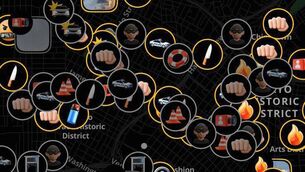There won't be any stopping the AI revolution

AI-generated content is already sweeping through the written word.
I read an interesting article last week about what the rise of AI-generated videos and other social media content might mean for how much time we spend online and on social media. Glued to our phones, scrolling endlessly: the amount of time and energy we spend and consume in this way has obviously been a hot topic for a long while now.
The rise of AI – of the use of Artificial Intelligence to do all sorts of things that humans used to do, as well as things we could not do – is another of those hot topics, and its potential as opportunity and as threat is hotter still.
The use of AI content on social media and online generally is one early instance of it. Combining social media with AI is a potent mix. Anyone who uses social media or watches online videos – on YouTube, for example – will know what’s involved. Increasing amounts of the content you see on those platforms is now obviously generated by AI, by machine computer systems which can produce video and text and imagery of all kinds in response to a basic brief given to it. This ‘AI generated content’ is already sweeping through the written word. Much of the text you see and read in your life is already generated by an artificial hand. It can be hard to tell the difference. Full Disclosure: this article was written by human hand.
With social media content, you can still see much of the artificially generated output a mile off. It has an obvious fakeness to it that is a giveaway. It looks unreal for now, though of course the AI creation process will soon make it look far better - and some of the more sophisticated stuff of course already does.
That obvious fakeness which still permeates much of the content is leading some to wonder whether people will tire of the quality of what they’re looking at, and turn away from watching so much. Could poorly realised AI content be what finally makes people turn away from social media and online scrolling? If it looks rubbish, the argument goes, we’ll consume less.
We all know some of the underlying and wider dynamics to that. The downside effects of social media and too much time online isn’t new. Spending too much time scrolling and viewing makes you quite literally sick. It’s like a hangover or that nauseous feeling a smoker gets when they have a second cigarette immediately after the first one. How horrible it is, and how impossible it is to stop, seems to be one of the few things we now actually talk about during those brief interludes away from being glued to the phone.
But will this latest development in what is on and how we use social media and online material make us more likely to put the phone away? Will its rubbishy look make us really consume less?
Many will be doubtful. The trend of these things will tell you why. One of the main things that you notice about the communications revolution in both mobile technology and online access is how it changes abnormal into normal. I remember two decades and more ago seeing a man walking up the street talking loudly to himself. On seeing him, I remember feeling a wave of sympathy for this well dressed and clean shaven gentleman. That wave lasted until I realised that he was in the middle of a hands free telephone call – with plugs in his ears, attached by a wire – while he walked along! I remember looking at him in astonishment, before telling whoever I saw next about it. What a curious thing, we thought. Could this catch on? Others, going back another decade or so, will tell you about seeing people bringing a suitcase into a restaurant or bar so that they could make a call. They were laughed at.
But in this communications revolution, whatever starts as curious or strange, soon becomes the norm.
And that new norm, when it settles in, rips apart the existing fabric of our social dynamics. Do you remember when people used to watch television? People would sit down in front of the TV and watch something at the scheduled time it was on. It didn’t have to be live sport for that. People watched programmes at designated times. And they watched them together, communally sharing the experience. There was the odd row about what to watch, but in its favour the family that watched television together, spent a lot of time together. That wasn’t that long ago. It is now coming to an end.
It might seem too early to be so definitive, but really it’s not. As a phenomenon, watching television as people have since the 1950s is over: it’s finished. Some people are still doing it, but hardly any of those are under 50 years of age. You don’t need to be an actuary to understand what that means. And what does that mean for social dynamics? You know what it means: everyone in different rooms, staring at screens, with headphones on.
And that isn’t just affecting social dynamics but also the capacity to grasp and pay heed to things. People used to read a newspaper. They now read – if they do at all – online headlines of news stories. Attention spans, which were never perfect, have collapsed. We all know it. We can all see it. We are all impacted by it.
Each of those changes came about because of technological changes in how sugar-coated bites of distraction called content were dropped in front of people’s eyes. With each new invention and trend, we were sold a pup each time - smart phones were supposed to free us up, and they have wrapped people in chains. Much of the new content we received was pure rubbish and we knew it when we saw it. And we lapped it up.
So, flooding social media and the internet more generally with AI content looks likely to go the same way. People are going to be first taken by it, then shaped by it and finally they will have their opinions determined by it. Who knows who will be behind all that, and to what end.
It’s a pretty demoralising prospect. But those silly obviously fake videos and other content you see now are the forerunners of future communications and thus of our social dynamic. Heaven help us.






